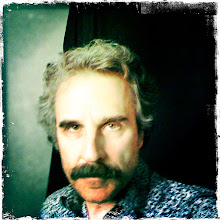 Day 37 - Photo 37. The wind threatened to rip the flag from it's moorings. They are called the Santa Anas, or Santanas. Or, even the Devil Winds. Many an infamous fire in Southern California have been driven by Santa Ana conditions pushing the fire through neighborhoods and communities. In meteorological terms it's described as an "offshore wind that results from the buildup of air pressure in the high-altitude Great Basin between the Sierra Nevada and the Rocky Mountains," We call it just plain old windy. The winds play havoc on power lines, roofing and even turning over big rig trucks on the freeways.
Day 37 - Photo 37. The wind threatened to rip the flag from it's moorings. They are called the Santa Anas, or Santanas. Or, even the Devil Winds. Many an infamous fire in Southern California have been driven by Santa Ana conditions pushing the fire through neighborhoods and communities. In meteorological terms it's described as an "offshore wind that results from the buildup of air pressure in the high-altitude Great Basin between the Sierra Nevada and the Rocky Mountains," We call it just plain old windy. The winds play havoc on power lines, roofing and even turning over big rig trucks on the freeways.During a police ride-along, a police officer told me there were three things that brought out the "crazies." A full moon, triple digit temperatures and the Santa Anas. Even author Ray Chandler noted the winds effect in his 1932 novel Red Wind, writing, "Those hot dry winds that come down through the mountain passes and curl your hair and make your nerves jump and your skin itch. On nights like that every booze party ends in a fight. Meek little wives feel the edge of the carving knife and study their husbands' necks. Anything can happen."
As a news photographer, when the Santa Anas come, you wait. It's as though the winds are pushing an unseen malice out of the mountains into the valleys and the coastal plains. You never wish mayhem and havoc on any population. But you know it's coming and you wait as the wind blows and gathers the dust into something tangible. You try to explain it to other people but they only look at you as though you'd lost your mind.
"Los Angeles weather is the weather of catastrophe, of apocalypse, and, just as the reliably long and bitter winters of New England determine the way life is lived there, so the violence and the unpredictability of the Santa Ana affect the entire quality of life in Los Angeles, accentuate its impermanence, its unreliability. The wind shows us how close to the edge we are."
Joan Didion "Los Angeles Notebook"







1 comment:
And here I thought those were the winds of change, my friend. The winds of change.
Heh.
Post a Comment